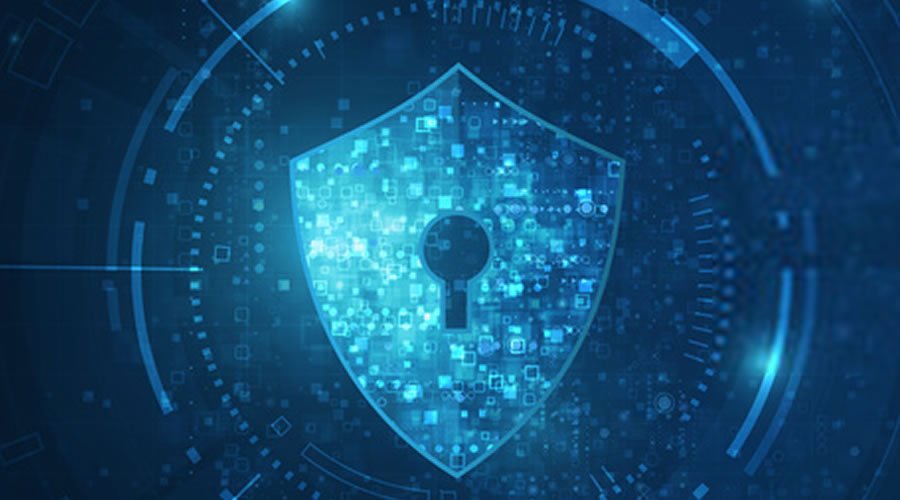Modern businesses face various challenges like the fluctuating economic landscape, employee performance, financial management, customer service, and many more. However, one of the biggest challenges nowadays is keeping the business safe from cyberattacks. Modern technology-related risks pose a threat to the continuity of big and small companies, and cybercriminals continuously find new ways to compromise and steal valuable data.
In order to deal with cyberattacks, companies should implement strategies of cybersecurity risk management. In this article, you will learn what it is about and what are the steps of the entire process. If you want to improve the security of your business, keep on reading!
Contents
What Is Cyber Security Risk Management
Cybersecurity risk management is a process of identifying, evaluating, and addressing cybersecurity threats your company might face, as well as determining how to respond to these risks and which preventative measures to utilize. It should be an essential part of every business, and there are services for cybersecurity consulting that can help you ensure it’s implemented correctly.
Cybersecurity Risk Management Process
Now that you know what cybersecurity risk management is, you can learn about a four-step process for applying it to your organization. The four general steps include:
Identification of Cyber Security Risks
There are several aspects that can be regarded as cybersecurity risks and lead to a negative business outcome. These include:
- Threats. They can be defined as events or circumstances that can compromise your organization’s operations. Some of the examples include natural disasters, human errors, structural or configuration failures, and hostile attacks.
- Vulnerabilities. These are the weaknesses in implementation, internal control, security procedures, and information systems that can be exploited.
- Consequences. They relate to the effects of a successful cyberattack in which the vulnerabilities are exploited by third parties. Depending on the type of organization, such an occurrence can be rather rare or quite the opposite – relatively common. You need to remember that during a cyberattack, data can be irretrievably lost, which could lead to serious financial damages.
Assessment of Cyber Security Risks
Next, you should assess the severity of each risk and determine how likely it is to occur. This part can be broken down into six steps:
- Naming all the assets.
- Prioritizing the importance of each asset.
- Identifying all the possible threats to your assets.
- Determining how likely it is for a specific threat to occur.
- Analyzing the significance of the impact in case of such an event, including possible consequences and costs.
Identification of Cyber Security Risk Mitigation Measures
Once you identify the risks your organization may encounter, you need to do something about them. Below, you’ll find some of the best practices for cybersecurity risk mitigation:
- Update your software. Outdated software often lacks important features and security patches. It’s like an open invitation for hackers to exploit the weaknesses of your system. Make sure you install the updates for your software and other browser extensions regularly.
- Backup your data. In case there’s a data breach, or you happen to lose your data in any other way, the continuity of your business might be at stake. According to various studies, even 60% of companies experiencing such an incident close down within six months. As such, it’s crucial to keep track of your data and have backups for everything that’s essential to your business.
- Train your employees. If you want your business to remain relatively risk-free, you need to ensure your employees are aware of the dangers associated with cybersecurity. Training programs should be obligatory for everyone using your software, handling sensitive data, and performing various operations. After all, some of the mishaps may be caused by your employees, either indirectly or maliciously.
- Use Multi-Factor Authentication (MFA) systems. They add another layer of security and help ensure that only authorized personnel has access to sensitive information.
- Apply privileged access management (PAM) solutions. These are security measures that monitor the online activities of privileged users, such as administrators. They promote compliance with data protection and protect essential business systems and resources.
Monitor the Situation
Cybersecurity risk management is an ongoing process. The risks are constantly changing, and so do your systems, software, and professional activities. As such, you should monitor and supervise changeable aspects such as regulatory change, vendor risk, and internal IT usage.
The Bottom Line
As you can see, cybersecurity risk management should be a vital part of every business. After all, hackers don’t discriminate, and each company handling sensitive data may fall victim to a cyberattack. Even today, cybersecurity risk management is a required element of security standards and frameworks of business operations. Despite the fact that businesses operate differently, they can adopt similar strategies to protect themselves from cyberattacks and ensure all the operations are secure.
Risk management is a continuous process that undergoes constant changes. Cybercriminals find new ways to compromise software and steal data, so new counteractions are being developed round the clock. Even so, you can still successfully manage all kinds of risks in your business with the help of employees, tools, and outside organizations specializing in cybersecurity.


